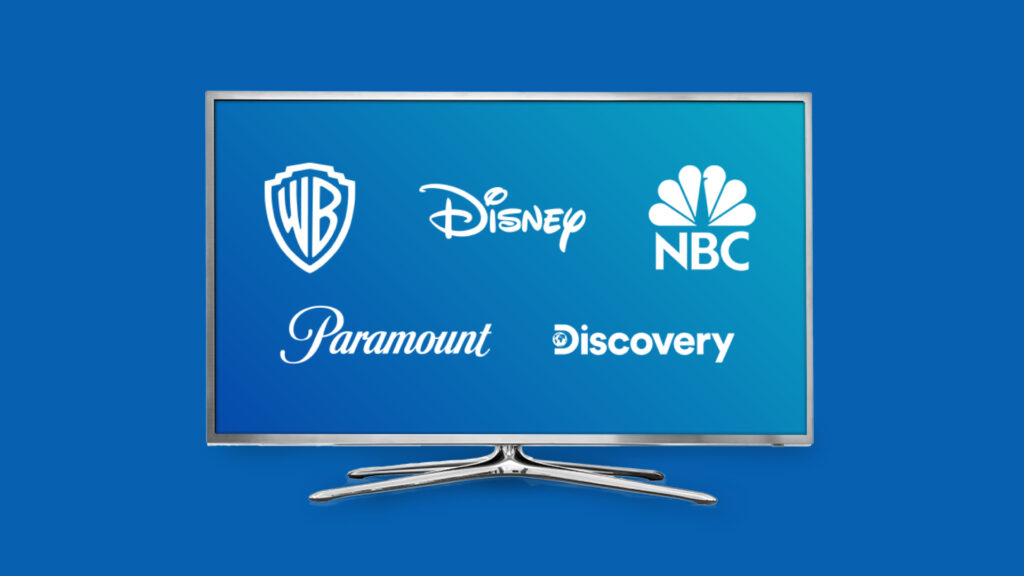How to Get Sales on Shopify: 10 Strategies to Increase Revenue
by Cat Hausler
8 Min Read
CES 2024: Stagwell (STGW) and MNTN Announce Partnership in Unified Performance SolutionsLearn More
Media companies expand their offerings and aim to dazzle advertisers despite a fluctuating audience.

5 Min Read
It’s that special time of year when the stages are set and the red carpet is rolled out–not for an awards show but the annual TV upfronts. For the first time since the pandemic, media companies and advertisers were back face-to-face in what was once the buying event of the season.
As the TV landscape has changed, however, so too have the upfronts. What was once a pivotal event to inform advertisers of the fall TV slate, this year’s upfronts saw a shift in focus to a reach story as the core players split their attentions between their streaming offerings and the legacy linear world. Media companies focused their efforts on the size and scope of their offering, rather than on programming and scheduling to wow advertisers who now have access to their audience in a variety of ways. The events highlighted the quickly evolving TV landscape as presentations spanned from linear to streaming.
This year’s upfronts made it clear–this is no longer just about linear TV. Now, presenting media companies like NBCUniversal and Disney must take the stage aiming to balance the conversation between the linear TV ad opportunity, which is still an essential piece of their business, and their streaming platforms.
Disney recently announced the launch of an ad-supported tier, to help grow their already substantial subscriptions. The other key upfront players also have their own ad-supported apps–NBCUniversal owns Peacock and the recently merged Warner Bros. Discovery own both Discovery+ and HBO Max. These services have led to a consolidation of the streaming industry, bundling channels into the networks’ owned streaming behemoths. And they are hugely important to the media companies’ bottom lines. Encouraging advertisers to spend across linear and their growing streaming platforms is essential to reaching their goals.
This story of growing offerings was a common theme around the upfronts this year. Media companies were going big–on their size. The narratives onstage were focused on the scale of their programming, their talent, and their content. Disney, for example, spent hours highlighting their various entities from Disney+ to Hulu and ESPN. The presenters focused on splashy displays from comedic roasts to musical performances, wowing the crowd with their scale, rather than their schedule. What was once an opportunity to highlight upcoming content became a game of show-and-tell about the growth these companies have seen. With their competitors beside them, the big players jostled for attention for advertisers.
Size wasn’t always the focus. The upfronts of old were a sneak preview of the upcoming fall schedule. The core media companies focused on hooking the crowd with trailers or even the occasional full episode. The programming and scheduling details were essential when linear TV reigned as it was bought on gross rating points (GRP). Without going too far down the (antiquated) road of linear TV buying, rather than the precise targeting of Connected TV advertising that’s available today, linear TV was bought based on an estimate of who was watching during specific days and times. Selecting a compelling new show during a key time to reach your demographic was essential for TV buyers which is why the fall schedule was so paramount.
Yet this year, the talk of the fall schedule was notably absent. This isn’t too surprising since streaming has done away with appointment TV and made it available on-demand. There is no need to sit down at 8 pm on a Thursday to watch your favorite show when you can access it any time that works for you. And along with the rise of streaming TV advertising is the development of more sophisticated targeting techniques. Advertisers can precisely reach their audience through demographic and behavioral targeting rather than relying on viewership trends. Media companies know that this story is shifting and have focused more on how many people their platforms can reach, focusing on size rather than schedule.
As the industry has changed with the focus on streaming, so have viewer behaviors. Analysts have noted a “churn and return” phenomenon among streamers. Rather than channel loyalists, viewers are constantly evaluating their roster of subscriptions. When a season of their favorite show has wrapped up, they may cancel that service until the next season or next hit show. A study by Antenna found that there were just under 30MM cancellations in Q1 2022. On average, streamers have 4 subscriptions at any one time–with so much choice out there, reshuffling their subscriptions allows them to have the best of all channels.
This constant fluctuation may deter advertisers from investing in a singular platform. While audiences may be shifting among the services, they are still active within the streaming universe. Rather than investing channel-by-channel, advertisers can safeguard against this “churn-and-return” phenomenon with partnerships with marketing software such as MNTN Performance TV. Its approach to audience targeting allows advertisers to reach viewers based on the viewer–not the programming–ensuring their ads reach those viewers as they bounce from service to service, app to app. When a viewer churns out of one service, Performance TV can still reach them on the other ones they are watching. This takes the focus off the reach and programming story of individual channels and puts the focus back on the streaming environment in its entirety.
The upfronts marked this notable shift in the TV industry as the media companies worked to showcase their evolving offerings. While programming and scheduling have taken a backseat to the talent and sheer size of the channels, the upfronts still offered a place for advertisers to showcase what they see as the defining factors of the upcoming TV season.